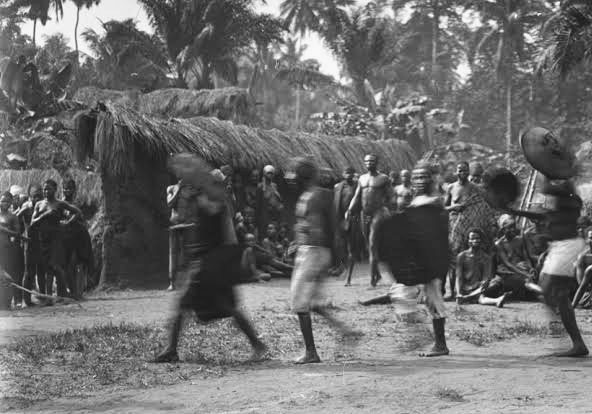
Ezhionum community like most Anioma towns turned out to be part of the representation of defiance to colonial oppression from the British government.
The people of Ezhionum aggressively stopped the British from appointing warrant chiefs and establishing native courts. The forceful revolt started when James Davidson, deputy district commissioner of Kwale, who was stationed in Amai, tried to establish a native court in Ezhionum,
When Ezhionum people gathered to hear what the messenger of the district court had to say through an interpreter, the discussion was halfway when Ezhionum people understood that the colonial government wanted to set up a native court in the community, this caused the youths of Ezhionum to drag out the messenger and flogged mercilessly, they also drove Davidson’s representative, out of Ezhionum community.
The next morning, Ezhionum people armed themselves, to clear further doubts and letting the British government know they were bent on protecting the tradional system of leadership that was passed on to them by their ancestors.
They marched to Amai community, where Davidson, the deputy district commissioner, who sent the message was stationed, this forced Davidson to abscond out of the community seeking refuge in Warri.
In response to this brutal events from Ezhionum people,the british government used their army to invade Ezhionum community, but the resilient warriors of Ezhionum defeated the first group of British army that invaded the community.
It took the British government some months after which they were able to deploye a larger army force to invade Ezhionum community the second time, which they met yet another fierce resistance.
Eventually, the community was subdued by the British army and the native courts was established.
The revolt of Ezhionum people, alongside her Anioma counterparts, portrays the huge resentment which ndi Anioma have towards oppression and the colonial government, for obvious reasons that it contradicts the indigenous idea of justice that ndi Anioma have been used to, before the invasion of the Europeans.
The 1905 Revolt of Ezhionum people towards the British indirect rule remains an example of Anioma’s zeal, to resist external control and to guide the political autonomy ndi Anioma.
Ohadike, D. C. (1994). Anioma: A social history of the western Igbo people.


